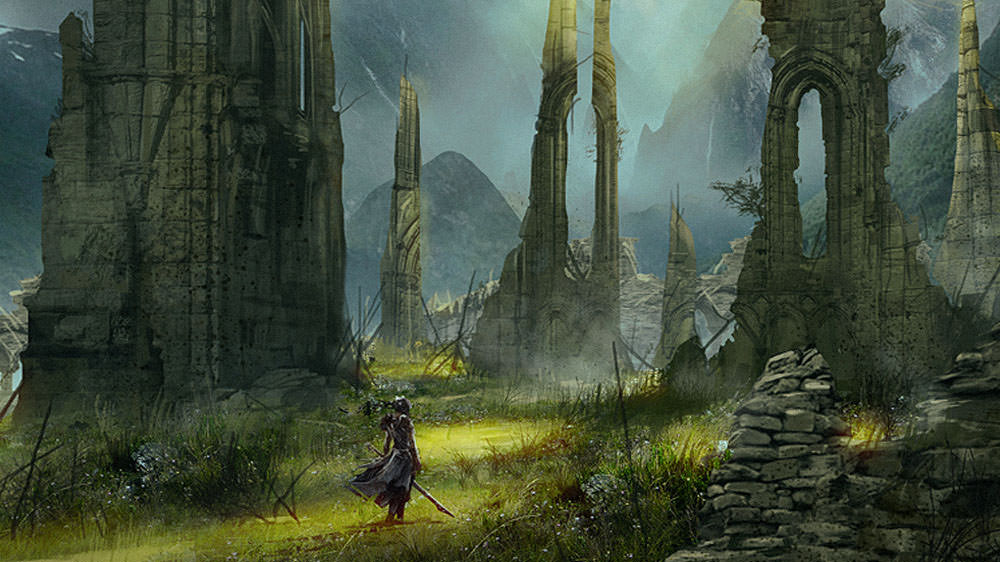Hellblade: Senua’s Sacrifice tells the story of a Celtic warrior’s journey through her own dark psychosis. This “independent AAA” title by Ninja Theory (Heavenly Sword) is more than a video game—it’s a demonstration of emerging game development technology while offering an empathetic, first-person view of mental illness.
The project is supported in part by the Wellcome Trust, a charitable foundation committed to a greater public understanding of science and health. Ninja Theory worked closely with experts in the field of mental illness, as well as people who shared their real-life experiences.
In Hellblade, Senua is a skilled warrior traumatized by a brutal Viking attack on her people. Determined to save the soul of her beloved, Senua must venture into the hell of her own psychosis and face the demons there.
“Developing Hellblade independently gives us the freedom to tackle a subject as challenging as mental health,” Ninja Theory said following the release of its E3 2015 trailer. “It is a subject that we are handling with all the respect it deserves, ensuring that our portrayal of Senua’s condition is both accurate and sensitive.”
Ninja Theory calls Hellblade an “independent AAA” game, meaning that it was created by a small studio, but strives for the quality of a larger one. The visual quality is driven by Unreal Engine 4, which can capture voice, motion and actor performances in real-time. This technology was on full display during GDC and SIGGRAPH last year, serving as a proof of concept for games, film and other forms of entertainment.
In an era when indie game developers often favor a retro aesthetic, Ninja Theory teamed up with Epic Games to go for extremely detailed photorealism.
“The reason we’re going for believability is [that] we are tackling some difficult themes in the game,” Ninja Theory Chief Creative Director Tameem Antoniades explained during the GDC presentation. “It’s very important for us to represent the physical, mental and the emotional trials of her journey as believably as possible.”
A photorealistic fantasy world lends itself to creativity, so Ninja Theory added a Photo Mode to the game. Players can easily take control of the camera and take snapshots at any point in the game to share on social media, which may be of particular interest to PlayStation 4 Pro and high-end PC owners since the game supports 4K resolutions.
Photo mode announced for #Hellblade! More details: https://t.co/dijV5oWqx6 pic.twitter.com/gNzqZ36ovM
— NinjaTheory (@NinjaTheory) July 25, 2017
Ninja Theory kept audiences up-to-date with the game’s progress through 29 developer diaries—each showcasing a different aspect of Hellblade: Senua’s Sacrifice from story to gameplay and controls, in addition to demonstrating how actress (and Ninja Theory’s video editor) Melina Juergens brought each scene to life in real-time.
Compared to other big game releases, it may appear on the surface that Hellblade: Senua’s Sacrifice didn’t get much in the way of marketing since it was first announced in 2014 at the PlayStation Gamescom media briefing. While it’s true the self-published title isn’t prominently featured in TV spots or Conan’s Clueless Gamer segment, Hellblade has created its own hype over time by simply being itself.
Players were still able to get their hands on some good old-fashioned pre-order bonuses, however. Those who pre-ordered on PlayStation 4 will receive an exclusive Hellblade: Senua’s Sacrifice Dynamic Theme that depicts the iconic burning tree scene from the game. Those pre-ordering on PC will receive an exclusive digital comic short, Hellblade: Senua’s Song. Fans can also head to the official website to pick up merchandise ranging from clothing to a special Hellblade candle that smells like “ancient trees and rain.”

